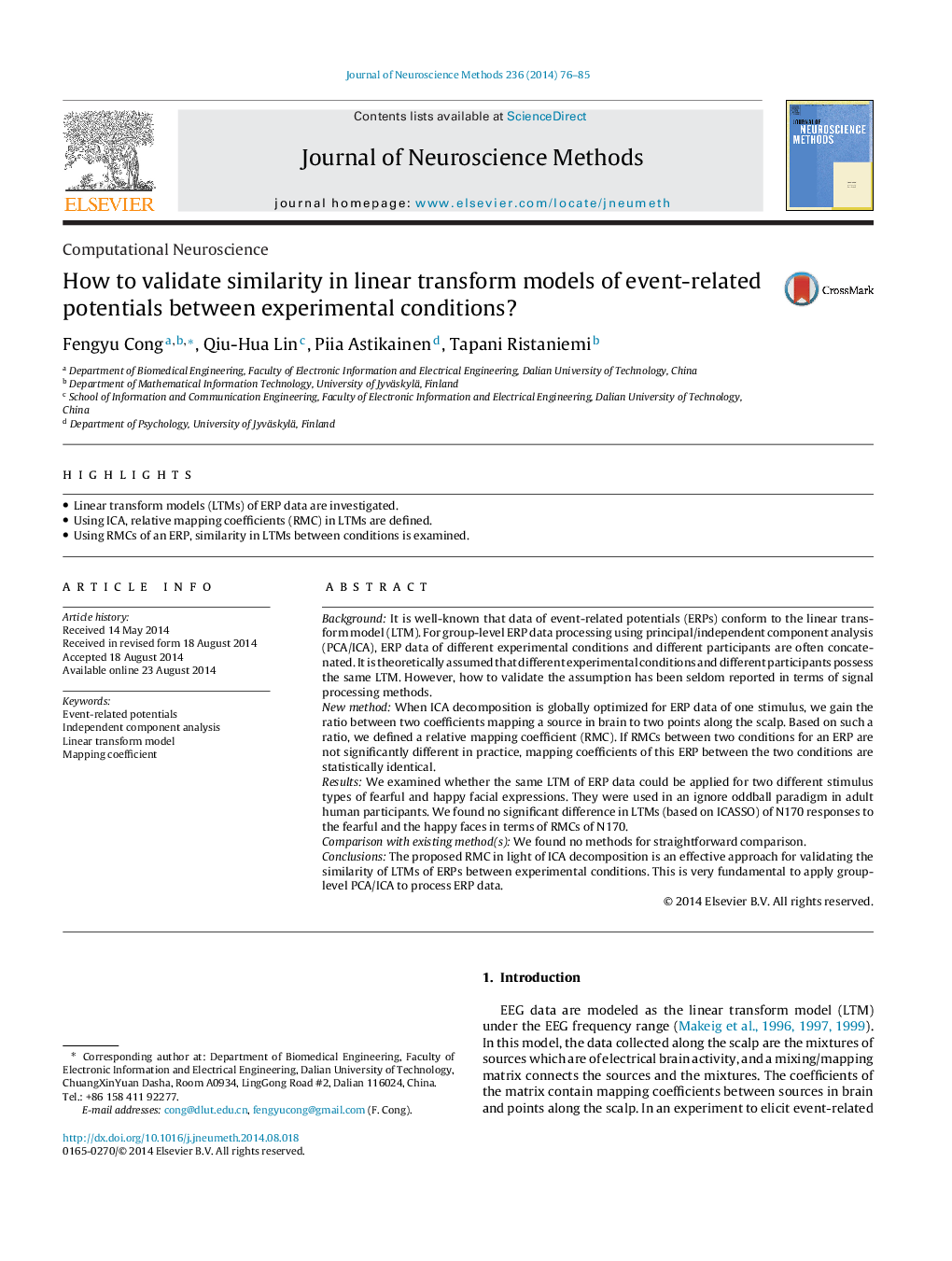| Article ID | Journal | Published Year | Pages | File Type |
|---|---|---|---|---|
| 6268579 | Journal of Neuroscience Methods | 2014 | 10 Pages |
â¢Linear transform models (LTMs) of ERP data are investigated.â¢Using ICA, relative mapping coefficients (RMC) in LTMs are defined.â¢Using RMCs of an ERP, similarity in LTMs between conditions is examined.
BackgroundIt is well-known that data of event-related potentials (ERPs) conform to the linear transform model (LTM). For group-level ERP data processing using principal/independent component analysis (PCA/ICA), ERP data of different experimental conditions and different participants are often concatenated. It is theoretically assumed that different experimental conditions and different participants possess the same LTM. However, how to validate the assumption has been seldom reported in terms of signal processing methods.New methodWhen ICA decomposition is globally optimized for ERP data of one stimulus, we gain the ratio between two coefficients mapping a source in brain to two points along the scalp. Based on such a ratio, we defined a relative mapping coefficient (RMC). If RMCs between two conditions for an ERP are not significantly different in practice, mapping coefficients of this ERP between the two conditions are statistically identical.ResultsWe examined whether the same LTM of ERP data could be applied for two different stimulus types of fearful and happy facial expressions. They were used in an ignore oddball paradigm in adult human participants. We found no significant difference in LTMs (based on ICASSO) of N170 responses to the fearful and the happy faces in terms of RMCs of N170.Comparison with existing method(s)We found no methods for straightforward comparison.ConclusionsThe proposed RMC in light of ICA decomposition is an effective approach for validating the similarity of LTMs of ERPs between experimental conditions. This is very fundamental to apply group-level PCA/ICA to process ERP data.
